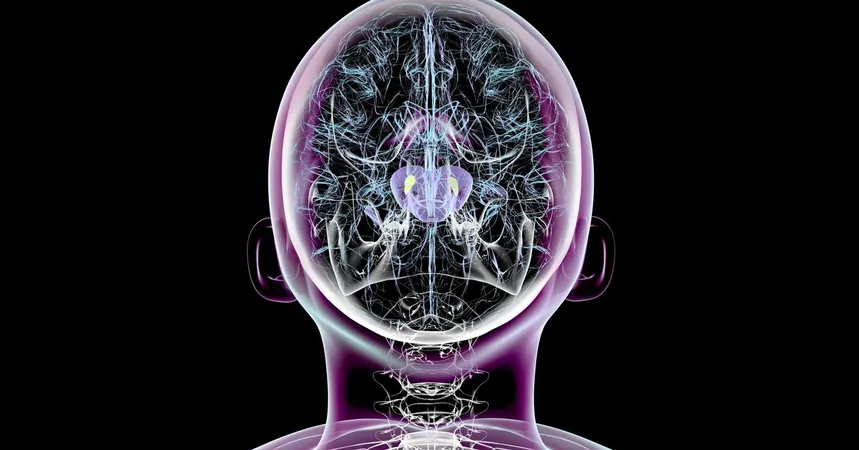
Breakthrough in Parkinson's Research: Scientists Reverse Symptoms in Mice!
2025-07-10
Author: Sarah
Parkinson's Disease: A Double Whammy for Public Health
In a startling revelation, the number of Parkinson's disease cases has skyrocketed over the past 25 years, doubling according to the World Health Organization. With nearly 10 million people afflicted globally and annual treatment costs soaring to around $10,000 per patient, the urgency for effective treatments has never been greater.
Unlocking the Mystery of Parkinson's Symptoms
Parkinson's disease is a debilitating neurological disorder characterized by the death of dopamine-producing cells in the brain, leading to tremors, muscle rigidity, and balance issues. Despite extensive research, a cure remains elusive, with current treatments primarily focused on managing symptoms.
The Pioneer Research of Professor Kay Double
Enter Professor Kay Double from the University of Sydney, whose decade-long investigation into the disease's biological mechanisms has paved the way for new potential therapies. His groundbreaking discovery in 2017 identified an abnormal variant of a protective protein known as SOD1 in Parkinson's patients, which fails to shield brain cells from oxidative damage.
Copper: A Game-Changer?
With this insight, Double's team explored copper supplementation as a promising route to mitigate symptoms. Their findings suggested that copper is crucial for restoring SOD1's protective capabilities. Enter CuATSM, a drug engineered to deliver copper directly to the brain.
Impressive Results from Experimental Trials
In a rigorous two-phase experiment documented in Acta Neuropathologica Communications, 27 young mice received varying doses of CuATSM. The optimal dose—15 milligrams per kilogram—was then tested on genetically modified mice with Parkinson's-like symptoms for three months. Miraculously, those treated with copper demonstrated no decline in motor functions, while their placebo counterparts showed marked deterioration.
Hope for Human Trials?
"All the mice treated showed a remarkable improvement in motor skills, surpassing our expectations," exclaimed Double. This promising outcome raises hope for future human trials that might slow down Parkinson's progression.
What Lies Ahead: Multiple Treatments Needed
However, experts emphasize that Parkinson's is multifaceted and may require a combination of therapies for effective management. Complementary research from Stanford University aims to restore neuron communication affected by genetic mutations linked to the disease, presenting a multifaceted approach to treatment.
A Bright Future: Stabilizing and Improving Conditions
Stanford's research focused on inhibiting hyperactivity of the LRRK2 protein, prevalent in 25% of genetic Parkinson's cases. Early results show a promising restoration of neuron communication and neuroprotective factors in treated mice, signaling a potential leap toward a stabilizing treatment.
The Urgent Need for Early Detection
Identifying early Parkinson's symptoms—sometimes present up to 15 years before classic tremors—will be crucial for effective treatments. The ultimate ambition? To harness these findings not just for LRRK2 mutation cases but for all forms of Parkinson’s.
A Growing Challenge for Global Health
As projections indicate a potential surge in Parkinson's cases exceeding 25 million by 2050, the race is on for innovative therapies capable of reversing disease progression. The scientific community is rallying to meet this challenge head-on, ensuring a better future for millions affected.
This groundbreaking research illuminates a path to hope for Parkinson's patients worldwide, with both immediate and long-term implications that could revolutionize treatment.



 Brasil (PT)
Brasil (PT)
 Canada (EN)
Canada (EN)
 Chile (ES)
Chile (ES)
 Česko (CS)
Česko (CS)
 대한민국 (KO)
대한민국 (KO)
 España (ES)
España (ES)
 France (FR)
France (FR)
 Hong Kong (EN)
Hong Kong (EN)
 Italia (IT)
Italia (IT)
 日本 (JA)
日本 (JA)
 Magyarország (HU)
Magyarország (HU)
 Norge (NO)
Norge (NO)
 Polska (PL)
Polska (PL)
 Schweiz (DE)
Schweiz (DE)
 Singapore (EN)
Singapore (EN)
 Sverige (SV)
Sverige (SV)
 Suomi (FI)
Suomi (FI)
 Türkiye (TR)
Türkiye (TR)
 الإمارات العربية المتحدة (AR)
الإمارات العربية المتحدة (AR)